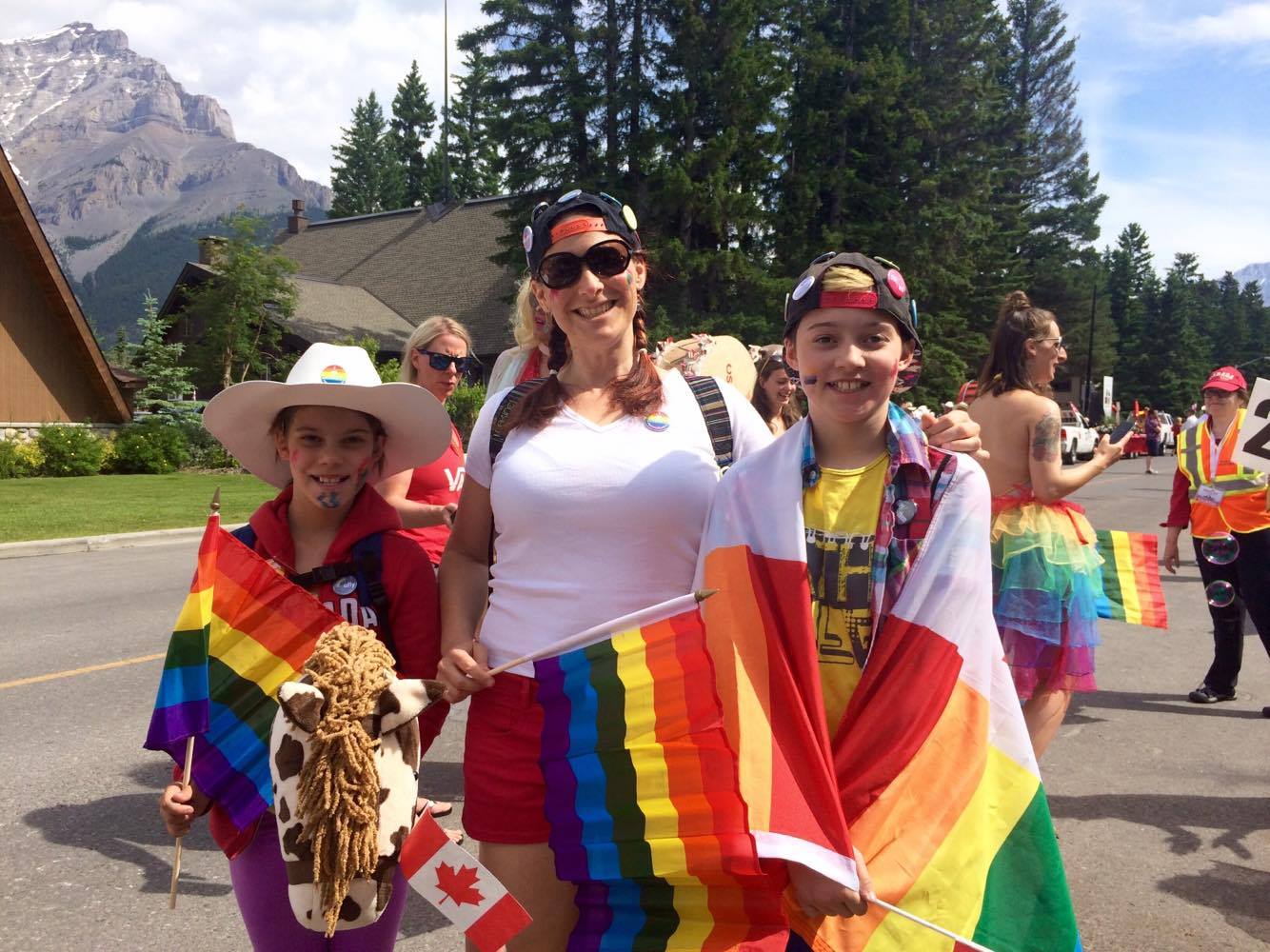It’s been a long time since I’ve last posted. I’ve been busy with workshops in schools and community organizations for parents, teachers, and students. I still feel like I have so much to share and say in this space, but work and kids and life often get in the way.
Then I read this post on Facebook, from a mom halfway across the country whom I’ve never met in person, but whose path crossed with mine thanks to a mutual friend. I have much respect and admiration for her writing skills, but it was the following post about her child’s recent decision to come out as transgender (specifically, non-binary) that stopped me short. I wrote to ask permission to repost it here, and she readily agreed.
I have a transgender child who regularly experiences gender dysphoria. I suspect many, if not most of you, don’t know what that means. But as I am compelled by the devastating news that yet another mother has lost her transgender child this week to suicide, I am going to tell you, because everyone needs to understand this NOW: Gender dysphoria refers to the severe distress experienced when a person’s outsides (their body &/or clothing) do not match their insides (their gender identity: who they know themselves to be).
When we as a society refuse to accept someone’s gender identity — by intentionally using the wrong name &/or the wrong pronoun; by refusing them access to the bathroom that matches their gender identity; by pressuring or downright forcing them to conform to the gender binary when their identity is non-binary (in other words, there IS no bathroom for them); by insisting that they wear their hair and clothing to make us feel comfortable, rather than to help them BE WHO THEY ARE — we inflict a form of suffering that is life threatening.
It breaks my heart, reading the posts of fellow parents of transgender youth who are struggling to keep their children alive in the face of discrimination and ignorance from other family members, friends, teachers, churches, schools. These children cut themselves, overwhelmed by a compulsion to self harm. They are afraid to leave the house. They are bullied. They are shamed. They are physically and psychologically beaten up. There is no excuse for this. It is so simple, and does no one any harm, to let these children be who they are. People need to learn. People need to understand. People need to change.
My family is so blessed. My child receives unconditional love from their mother, father, and sister. My child is accepted and supported by our community of family, friends, teachers, and other caregivers. And still, it is not easy. We have waited a long time to receive medical support and treatment, but we are now receiving that. We have been fumbling along, pulling together our support team of allies, support groups, and counsellors. We are the lucky ones.
Please, share this far and wide. I don’t believe most people mean the harm they do. They don’t understand. They are afraid. But all of us, I believe, want the same thing: to be loved and accepted for who we are. And that’s what our children need from us.
 So much love. So much courage. Such wise words.
So much love. So much courage. Such wise words.
I asked if I could share this post in this space because it moved me enough to pick up where I left off many months ago.
She agreed, then asked her child and their sibling if they had anything else they’d like to add. Together, they came up with some advice for anyone wanting to know how to be supportive allies to their transgender friends, family members, classmates, and colleagues:
- Read up on transgender identities and gender dysphoria to educate yourself on what it means and how it feels to be transgender. While respectful questions and conversations are generally welcome, it is a strain on transgender people to have their gender constantly at the forefront of every interaction and conversation and to carry the ongoing responsibility of educating others.
- Always accept another person’s chosen name and pronouns. Their identity is about them, not you. It is disrespectful and rude to complain about how hard it is for you to get their name and pronouns correct. Imagine how difficult it is to be transgender and have your dysphoria triggered by being misgendered and deadnamed!
- Always make an effort to use your friend/family member/classmate/colleague’s requested name and pronouns. It’s ok to make mistakes! If you do, simply correct yourself and move on. If you stop and make a big deal out of your mistake, you make it all about you, when that person’s name and pronouns are supposed to be all about them.
- Never ask about another person’s genitals!!! Someone else’s private parts are none of your business unless you are embarking on an intimate and consensual relationship with them.
- If you observe someone using the incorrect name and pronoun for your transgender friend/family member/classmate/colleague, kindly correct them. If you see someone harassing or bullying a transgender person (or anyone for that matter), stand up for them!
- Show your support for the LGBTQ community by wearing pride pins, participating in pride parades, posting a rainbow on your social media page, office door, etc.
- Start an LGBTQ-Straight Alliance in your school/organization. If you manage/over-see a public or communal space, pro-actively look for ways to make it inclusive and gender neutral. Provide gender-neutral bathrooms and if you are in a public/communal space that does not offer one, be a good ally and request that one be provided.
- Be mindful of the power of your words. Making jokes about depression, self-harm, and suicide, can be very triggering for anyone dealing with emotional pain. Ask yourself before you speak: Is it true? Is it necessary? Is it kind? If the answer to any of these question is “No,” it is best to keep your mouth shut.
- Always affirm someone’s choice of gender expression, even if it seems unusual to you or makes you feel uncomfortable. Genuine compliments on hairstyle and clothing are welcome. Pressuring someone to wear/try on clothing or hairstyles they are not comfortable in is not cool.
- Advice from the little sister of a non-binary sibling: give one of your special stuffies a gender-neutral name and pronouns and introduce them to all of your friends and family members!
For more information and additional resources
- Families in Transition: A Resource Guide for Parents of Trans Youth, Central Toronto Youth services
- Our Trans Children (PFLAG Transgender Network, Sixth Edition)
- Supportive Families, Healthy Children: Helping Families with Lesbian, Gay, Bisexual and Transgender Children (San Francisco State University – Family Acceptance Project, 2009)
- Welcoming our Trans Family and Friends: A Support Guide for Parents, Families and Friends of Transgender and Gender Non-Conforming People, PFLAG National



